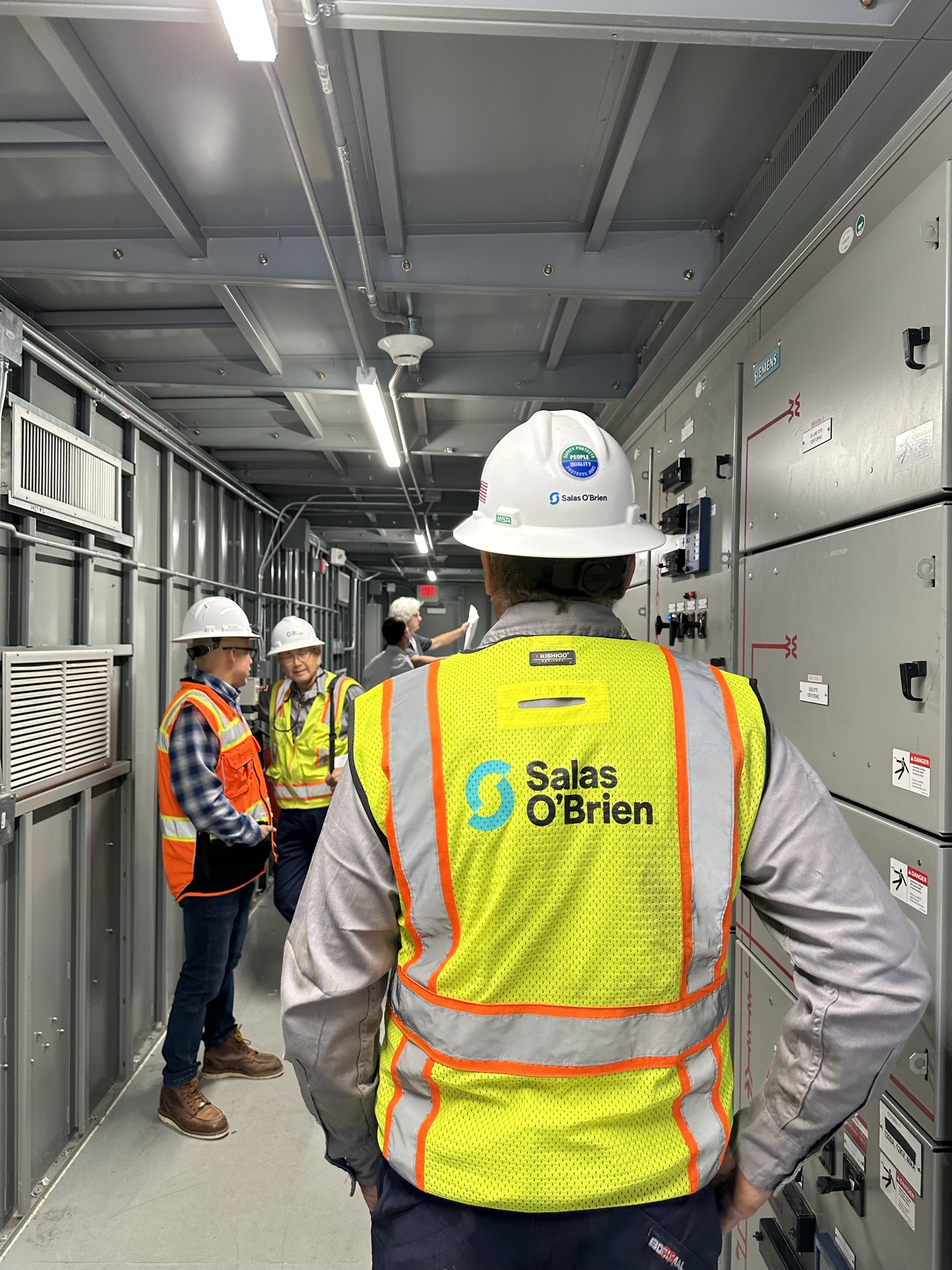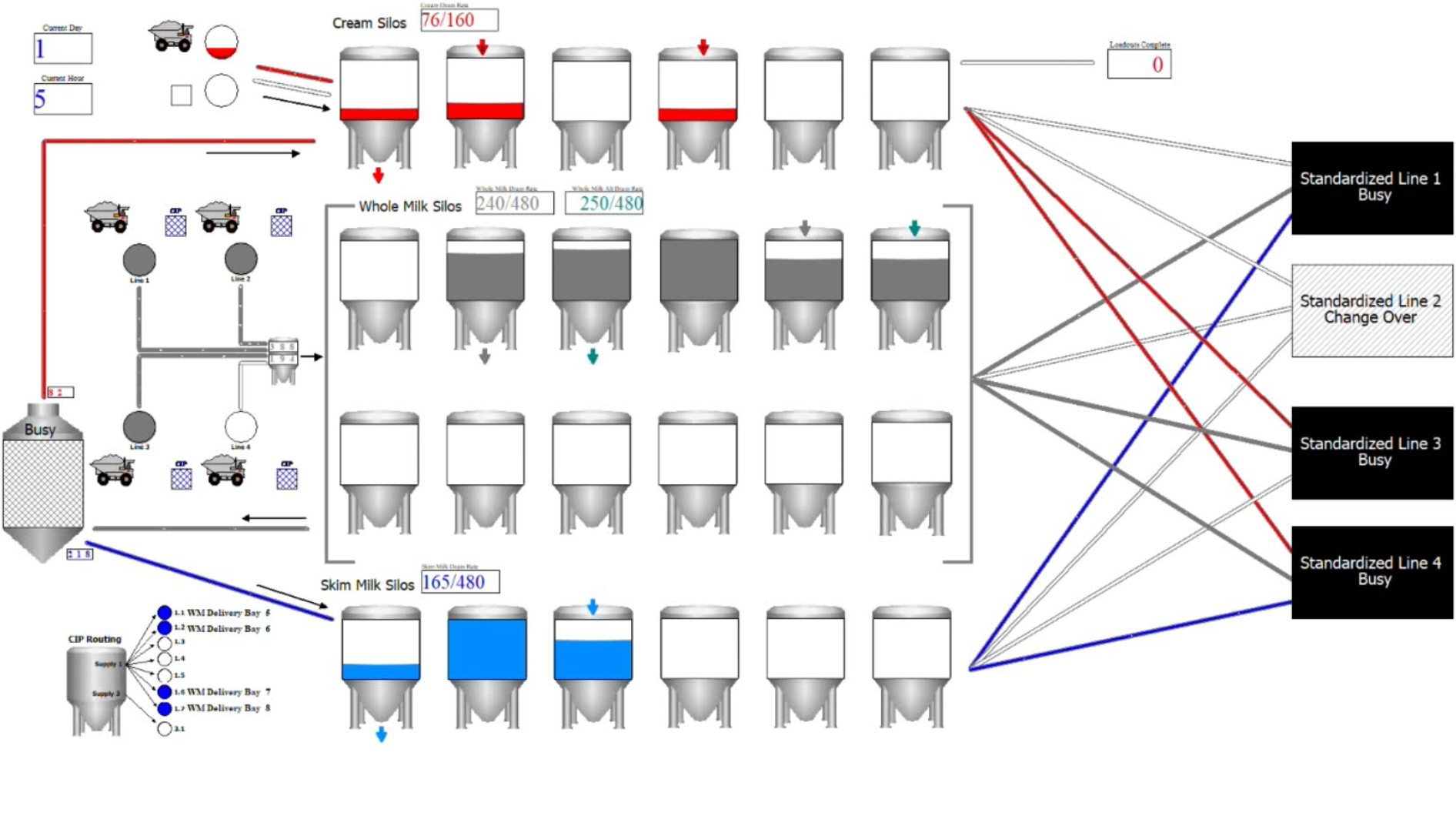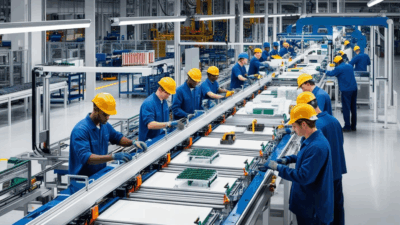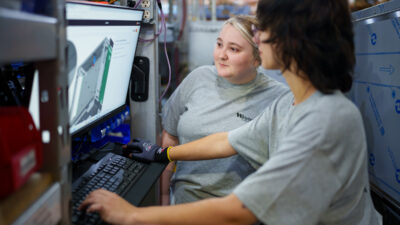Learn how plant engineers can overcome the gap between artificial intelligence (AI) potential and practical execution in the workplace.

Learning Objectives
- Identify practical applications of AI in plant operations, including maintenance, supply chain and customer service, to enhance efficiency and reduce downtime.
- Evaluate challenges and solutions for integrating AI tools into existing workflows to maximize benefits.
- Develop strategies to leverage AI for predictive insights, process optimization and talent acquisition, ensuring alignment with organizational goals.
AI insights
- This covers five key areas where AI can be implemented effectively: predictive maintenance, process optimization with digital twins, supply chain management, customer service and recruiting.
- Through numerous examples and actionable insights, the article demonstrates how AI can improve efficiency, enhance decision-making and drive operational resilience, offering practical solutions to real-world challenges.
For plant engineers, the idea of leveraging artificial intelligence (AI) isn’t new. Conversations about predictive analytics, autonomous systems and digital twins have dominated industry discussions for years. But for many, the enthusiasm for AI’s potential has been met with equal parts frustration. Why? Because often the promise of AI feels disconnected from the realities of factory floors, where equipment, processes and people are intertwined in day-to-day operations.
The gap between knowing what AI can do and making it work in real-world settings and sharing that with management can feel overwhelming. Plant engineers find themselves asking the same questions: How do we transition from reactive to predictive maintenance? Can digital twins truly optimize processes and prevent downtime? How do we ensure AI doesn’t overcomplicate supply chains or create more problems than it solves?
These are not theoretical concerns — they’re practical ones. And they deserve practical answers. The focus is on how plant engineers can move beyond abstract concepts and buzzwords to actionable solutions, uncovering how AI can solve real-world challenges while enhancing efficiency and resilience.
Process optimization and testing: AI-enabled digital twins
For plant engineers, minimizing downtime is a goal — but achieving it requires more than just predictive maintenance. Enter AI-enabled digital twins, a simulation that transforms process optimization from a trial-and-error exercise into a virtual science. By creating a digital replica of physical systems, digital twins allow engineers to simulate scenarios, refine processes and predict outcomes without disrupting operations.
How it works:
- A digital twin is a virtual model of a physical system, from a single machine to an entire production line. The size of the simulation allows for great flexibility. Once you build a foundation, you can add on more as your budget allows and you can also maintain to simulate future scenarios.
- Powered by real-time data collected through internet of things (IoT) sensors, the twin simulates conditions, evaluates performance and identifies inefficiencies.
- Engineers can ask “what if” questions without costly experiments in the physical world.
For example, Salas O’Brien created a simulation model for a food and beverage client’s facility. The goal was to test planned process upgrades and identify gaps in existing planning. The simulation covers bulk liquid receiving, tank farm storage, blending, packaging and shipping. Using the model, the client visualized changes in real-time and obtained simulated data, changing the original proposed plan considering the data enabling successful and efficient upgrades.
Overcoming barriers to adoption: Once in place, digital twins not only enhance process efficiency but also accelerate innovation.
- Complexity in model creation: Building a comprehensive digital twin requires extensive data, but starting with high-priority systems and scaling up gradually can mitigate this complexity. Pricing for development is typically based on the complexity of the scenarios.
- Integration with existing tools: Ensuring digital twins communicate seamlessly with ERP or MES systems is critical. Selecting open, interoperable platforms helps.
- Data accuracy: Regular calibration and real-time validation ensure the twin remains reliable.
Getting from reactive to predictive maintenance
For many plants, maintenance strategies still follow a reactive or scheduled approach. Equipment runs until it fails or maintenance occurs at predetermined intervals, regardless of the asset’s actual condition. While these methods are familiar and straightforward, they come with significant downsides: unplanned downtime, unnecessary costs and even safety risks.

Predictive maintenance, powered by AI, flips this paradigm by enabling a data-driven approach. Instead of waiting for failure or relying on static schedules, AI models analyze sensor data, machine performance trends and historical patterns to predict when and why a failure is likely to occur.
How it works:
- Sensors installed on critical equipment continuously monitor key parameters like vibration, temperature and pressure.
- AI algorithms process this data in real time, looking for patterns or anomalies that signal potential failure.
- AI delivers actionable insights via alerts and maintenance recommendations, allowing teams to address issues before they escalate.
Consider a pharmaceutical plant where unplanned downtime from a variable frequency device disrupts production schedules. By implementing predictive maintenance with AI, the plant can monitor motor wear and anomalies. When the AI system detects a deviation from the normal range, it triggers an alert, enabling the maintenance team to replace the motor during scheduled downtime, avoiding costly disruptions. This capability is available from all the major automation suppliers including Rockwell’s FactoryTalk Analytics GuardianAI, Siemens’ Senseye Predictive Maintenance and the ABB Ability Genix Asset Performance Management Suite.
Overcoming barriers to adoption includes:
- Integration with legacy systems: Many plants rely on older equipment without built-in sensors. Retrofitting these machines with predicted devices can bridge the gap and unlock those capabilities.
- Cultural shift: Teams accustomed to traditional maintenance methods may hesitate to trust AI-driven insights. Education and pilot programs can demonstrate the technology’s value, fostering buy-in.
- Cost justification: While the upfront investment in AI and IoT sensors can be significant, the return on investment from reduced downtime, extended asset life and lower maintenance costs often outweighs the expense.
By embracing predictive maintenance, plant engineers can transition from firefighting to planned action. This shift doesn’t just save money — it empowers teams to plan confidently and focus on proactive improvements.
AI for sourcing and procurement
For plant engineers, sourcing and procurement is both a lifeline and a source of constant headaches. Material shortages, unpredictable lead times and fluctuating costs can disrupt production schedules and undermine operational efficiency. AI is emerging as a transformative force, offering plant engineers the tools to navigate these complexities with precision and agility.
How it works:
- AI is currently being used to “automate” the sourcing and negotiation process largely on frequently purchased commodities and commercially off the shelf products and services.
- This is a time saver for teams that have a large volume of commodity-based purchasing demand.
- The availability of market intel and pricing data allows the AI program to automatically negotiate or offer the optimized market price to competing suppliers with a high degree of accuracy and expediency.
As an example, a negotiated bulk fuel agreement was reached with a national diesel fuel provider to supply company tanks at a cost-plus price that provided immediate savings. Additionally, company fuel tanks were outfitted with technology that compared the fuel level in the tank with the current cost of market prices. Fuel was purchased either the same day or the next based on financial projections stemming from the petroleum markets. The technology at the tank was a transducer, which triggered the AI to analyze and predict immediate and future fuel price trends to optimize spend management in this category.
Overcoming barriers to adoption:
- Expect trial and error with the setup: The key criteria to achieving success in this process is to have clearly defined parameters, specifications and rules for the AI program to perform to expectations and deliver value add results through increased savings and cost avoidance.
- Complexity requires oversight: More complex engineered solutions require a greater degree of human oversight and engagement.
- Processes and procedures need to be managed: AI isn’t a “cure all.” It’s a tool that has to be managed. Consider it as an augmentation to your normal work with markets and suppliers.
For plant engineers, embracing AI in sourcing isn’t just about efficiency; it’s about maintaining a competitive edge.
AI for customer service
While customer service might not seem like a traditional focus for plant engineers, its impact on overall operations is undeniable. Customer satisfaction drives repeat business and ensuring timely, accurate communication with customers is crucial. AI offers plant engineers tools to streamline customer interactions, resolve issues faster and align customer demands with operational capabilities.
How it works:
- AI systems like chatbots or virtual assistants use natural language processing to understand and respond to customer inquiries in real time.
- Machine learning analyzes customer data to forecast order trends, anticipate questions and recommend personalized solutions.
- AI integrates with ERP systems, connecting customer service platforms with plant operations to provide real-time updates on production schedules and inventory.
A packaging manufacturer frequently dealt with delays in responding to customer inquiries about order statuses. After implementing an AI-powered chatbot integrated with the enterprise resource planning (ERP) system, customers received instant updates on order progress, delivery timelines and options for expedited shipping. This improved satisfaction while allowing plant teams to focus on operations.
Overcoming barriers to adoption:
- Data accuracy: AI relies on accurate underlying data. Regular updates to ERP and customer relationship management systems ensure reliable responses.
- Customization needs: Generic AI solutions may not meet specific operational requirements. Customizable platforms align better with unique workflows.
- Customer trust: Some customers may distrust automated systems. Combining AI with access to human representatives balances efficiency with reassurance.
AI enhances, rather than replaces, customer service teams. By managing routine tasks, AI frees up human representatives for more complex inquiries, improving both efficiency and customer relationships.
AI for recruiting
Recruiting skilled talent is one of the toughest challenges for plant engineers. As the manufacturing sector evolves, it becomes challenging to find workers who possess the right blend of technical expertise and adaptability. AI-powered recruiting tools are reshaping how plants attract, assess and onboard top talent, making the hiring process faster, more accurate and less resource-intensive.
How it works:
- AI analyzes job descriptions to ensure they’re inclusive, clear and targeted to desired skills.
- AI systems scan resumes and applications, identifying top candidates based on criteria such as certifications, experience or relevant skills.
- AI tools automate candidate communication, scheduling interviews and responding to queries through chatbots or email automation.
In one case, a large equipment manufacturer struggled to fill maintenance technician roles. By implementing an AI-powered recruiting platform, the company automated resume screening, matched candidates with job openings based on skills and experience and broadened the talent pool. The result was a 30% reduction in time-to-hire and better-qualified hires.

Overcoming barriers to adoption:
- Bias in algorithms: Historical data may introduce bias into AI systems. Regular audits and updates ensure fairness and inclusivity.
- Integration with current processes: Introducing AI into recruiting workflows may require training. Starting with pilot projects helps smooth the transition.
- Balancing automation with human touch: While AI handles administrative tasks, human involvement remains vital for evaluating cultural fit and building rapport.
AI speeds up hiring and identifies talent that might otherwise go unnoticed. For plant engineers, this means reducing downtime from understaffing and fostering innovation through diverse, qualified teams.
Getting AI from theoretical to practical
AI offers transformative potential for plant engineering, but its true value lies in practical execution. To bridge the gap between theory and real-world application, plant engineers should start small and focused. Identify specific AI projects that address well-defined challenges, such as reducing downtime or improving supply chain visibility and implement them as controlled experiments within a single department or system.
For example, pilot an AI-driven predictive maintenance solution on a critical piece of equipment before scaling it plant-wide. Similarly, test an AI-powered recruiting platform with one job category or implement digital twins for one production line to refine processes.
This incremental approach minimizes risk, delivers quick wins and builds confidence in AI tools. As these smaller initiatives prove successful, they can be integrated into broader workflows, creating a foundation for enterprise-wide adoption.
By adopting this phased strategy, plants can unlock AI’s full potential while maintaining agility, competitiveness and readiness for the evolving demands of manufacturing.



